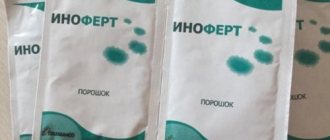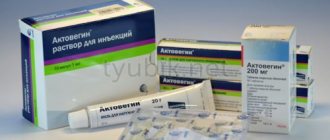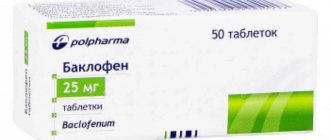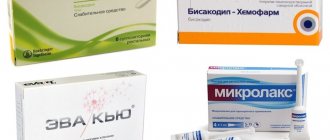Thrush or vaginal candidiasis is a disease that is encountered quite often today. Moreover, it occurs in both men and women. The difference is that in women it manifests itself with severe symptoms, while a man can only be a carrier, without characteristic signs. The causative agent of the disease is the diploid fungus Candida. This fungus exists in the body of every person, but favorable conditions, decreased immunity, and a number of other factors provoke its proliferation. The consequence of which is the disease thrush. In the article we talk about the causes, symptoms of thrush, as well as the popular treatment “Flucostat”.
How it works
Flucostat affects many microorganisms:
- candida;
- cryptococks;
- microspores;
- trichophytons;
- blastomycetes;
- coccidioides immitis;
- histoplasma.
The drug is well absorbed by the intestines. Half an hour after administration, the maximum concentration is already reached. The substance penetrates into all systems and organs. Excreted in urine.
Reasons for the development of thrush
There are many reasons for the development of thrush. At the same time, there are a number of main factors that have a strong influence on the microflora and thereby provoke the appearance of thrush:
- Antibiotics;
- acute respiratory viral infections and food poisoning;
- stressful conditions;
- chronic diseases of the reproductive system;
- hormonal changes;
- endocrine diseases;
- reaction to underwear and intimate hygiene products;
- poor nutrition;
- sudden climate change.
Symptoms of thrush
You can notice thrush in the early stages of the disease:
- the discharge becomes more abundant and acquires a cheesy consistency;
- irritation and swelling of the genital mucosa appears;
- During sexual intercourse and urination, discomfort is clearly felt - burning, itching.
When is it prescribed?
The drug is prescribed in the following conditions:
- mycosis;
- pityriasis versicolor;
- cryptococcosis;
- onychomycosis;
- candidiasis;
- prevention of fungal diseases;
- thrush;
- fungal infections after chemotherapy.
The drug is also prescribed as a prophylaxis during treatment with antibiotics.
Who should not take it
The drug is contraindicated:
- children under three years old;
- with galactosemia;
- with increased sensitivity;
- with lactose intolerance;
- with renal failure;
- with liver failure;
- with alcohol addiction;
- during treatment with hepatoxic drugs;
- with extensive arrhythmia.
Sometimes unpleasant actions occur during treatment.
Side effects
Side effects appear as:
- nausea;
- diarrhea;
- flatulence;
- dizziness;
- headache;
- thrombocytopenia;
- allergies;
- reduction of leukocytes.
When administered intravenously, side effects occur:
- nausea and vomiting;
- migraine;
- convulsions;
- abdominal pain;
- liver failure;
- arrhythmia;
- decreased potassium levels in the blood;
- increased triglycerides;
- hair loss;
- kidney dysfunction.
If such phenomena occur, stop taking it and consult a doctor.
Flucostat 150 mg 2 pcs. capsules
pharmachologic effect
Antifungal agent.
Composition and release form Flucostat 150 mg 2 pcs. capsules
Capsules - 1 capsule:
- active substance: fluconazole - 150 mg;
- excipients: lactose (milk sugar) - 147.40 mg, corn starch - 49.00 mg, colloidal silicon dioxide (aerosil) - 0.36 mg, magnesium stearate - 2.88 mg, sodium lauryl sulfate - 0.36 mg;
- hard gelatin capsules (body and cap): titanium dioxide (E 171) - 2.0000%, gelatin - up to 100%.
1, 2, 3, 6 capsules of 150 mg each in a blister pack.
1 blister pack 4 blister packs of 6 capsules each along with instructions for use in a cardboard pack.
Description of the dosage form
Opaque capsules No. 0, white body and cap.
Characteristic
An antifungal agent from the group of triazole derivatives.
Directions for use and doses
Inside.
For adults with cryptococcal meningitis and cryptococcal infections of other localizations, 400 mg (8 capsules of 50 mg each) is usually prescribed on the first day, and then treatment is continued at a dose of 200-400 mg 1 time / day. The duration of treatment for cryptococcal infections depends on clinical effectiveness confirmed by mycological examination; for cryptococcal meningitis it is usually continued for at least 6-8 weeks. To prevent relapse of cryptococcal meningitis in AIDS patients, after completing the full course of primary treatment, fluconazole is prescribed at a dose of 200 mg/day for a long period of time. For candidemia, disseminated candidiasis and other invasive candidal infections, the dose is usually 400 mg on the first day, and then 200 mg each. If clinical effectiveness is insufficient, the dose of the drug can be increased to 400 mg/day. The duration of therapy depends on clinical effectiveness.
For oropharyngeal candidiasis, the drug is usually prescribed 50-100 mg 1 time / day; Duration of treatment is 7-14 days. If necessary, in patients with a pronounced decrease in immunity, treatment may be longer.
For atrophic candidiasis of the oral cavity associated with wearing dentures, fluconazole is usually prescribed 50 mg once a day for 14 days in combination with local antiseptics for the treatment of the denture.
For other localizations of candidiasis (except for genital candidiasis), for example, esophagitis, non-invasive bronchopulmonary lesions, candiduria, candidiasis of the skin and mucous membranes, etc., the effective dose is usually 50-100 mg/day with a treatment duration of 14-30 days. To prevent relapses of oropharyngeal candidiasis in patients with AIDS after completing the full course of primary therapy, the drug can be prescribed at a dose of 150 mg once a week.
For vaginal candidiasis, fluconazole is taken:
- For newly diagnosed vaginal candidiasis - a single dose of 150 mg;
- For vaginal candidiasis with rare exacerbations or mild or moderately severe symptoms - a single dose of 150 mg;
- For severe vaginal candidiasis (with severe symptoms) - 150 mg once a day with an interval of 72 hours (on days 1 and 4 of therapy);
- For vaginal candidiasis with frequent relapses (4 or more times a year) - for the treatment of exacerbation: 150 mg 1 time per day with an interval of 72 hours (on days 1, 4 and 7 of therapy); to reduce the frequency of relapses: 150 mg once a week for 6 months.
Some patients may require more frequent use.
For balanitis caused by Candida, fluconazole is prescribed as a single dose of 150 mg orally.
Pharmacodynamics
Fluconazole, a member of the triazole antifungal class, is a selective inhibitor of sterol synthesis in fungal cells.
The drug is effective against opportunistic mycoses, incl. caused by Candida spp., Cryptococcus neoformans, Microsporum spp., Trichophyton spp. Fluconazole has also been shown to be active in models of endemic mycoses, including infections caused by Blastomyces dermatitidis, Coccidiodes immitis and Histoplasma capsulatum.
Pharmacokinetics
After oral administration, fluconazole is well absorbed, its bioavailability is 90%. The maximum concentration after oral administration, 150 mg on an empty stomach, is 90% of the content in. plasma when administered intravenously at a dose of 2.5 - 3.5 mg/l. Concomitant food intake does not affect the absorption of the drug taken orally. Plasma concentrations reach a peak 0.5-1.5 hours after administration; the half-life of fluconazole is about 30 hours. Plasma concentrations are directly proportional to dose. 90% level of equilibrium concentration is achieved by 4-5 days of treatment with the drug (when taken 1 time / day).
Administration of a loading dose (on the first day), 2 times higher than the usual daily dose, allows one to achieve a level corresponding to 90% of the equilibrium concentration by the second day. The apparent volume of distribution approximates the total body water content. Plasma protein binding - 11-12%.
Fluconazole penetrates well into all biological fluids of the body. Concentrations of the drug in saliva and sputum are similar to its levels in plasma. In patients with fungal meningitis, the fluconazole content in the cerebrospinal fluid reaches 80% of its plasma level.
In the stratum corneum, epidermis, dermis and sweat fluid, high concentrations are reached that exceed serum concentrations. Fluconazole is excreted primarily by the kidneys; approximately 80% of the administered dose is excreted unchanged. Fluconazole clearance is proportional to creatinine clearance. No fluconazole metabolites were detected in peripheral blood.
Indications for use Flucostat 150 mg 2 pcs. capsules
- Cryptococcosis, including cryptococcal meningitis and other localizations of this infection (including lungs, skin), both in patients with a normal immune response and in patients with various forms of immunosuppression (including in patients with AIDS, with organ transplantation ); the drug can be used to prevent cryptococcal infection in patients with AIDS;
- in generalized candidiasis, including candidemia, disseminated candidiasis and other forms of invasive candidal infections (infections of the peritoneum, endocardium, eyes, respiratory and urinary tract). Treatment can be carried out in patients with malignant neoplasms, patients in intensive care units, patients undergoing cytostatic or immunosuppressive therapy, as well as in the presence of other factors predisposing to the development of candidiasis; in candidiasis of the mucous membranes, incl. oral cavity and pharynx (including atrophic candidiasis of the oral cavity associated with wearing dentures), esophagus, non-invasive bronchopulmonary candidiasis, candiduria, skin candidiasis; prevention of relapse of oropharyngeal candidiasis in patients with AIDS;
- genital candidiasis: treatment of vaginal candidiasis (acute and chronic recurrent), prophylactic use to reduce the frequency of relapses of vaginal candidiasis (3 or more episodes per year);
- candidal balanitis;
- prevention of fungal infections in patients with malignant neoplasms who are predisposed to such infections as a result of chemotherapy with cytostatics or radiation therapy;
- mycoses of the skin, including mycoses of the feet, body, and groin area;
- pityriasis versicolor, onychomycosis; skin candidiasis;
- in deep endemic mycoses, including coccidioidomycosis, paracoccidioidomycosis, sporotrichosis and histoplasmosis in patients with normal immunity.
Contraindications
- Simultaneous use of terfenadine (against the background of repeated doses of fluconazole at a dose of 400 mg/day or more);
- Hypersensitivity to fluconazole and other components of the drug or azole compounds similar in structure;
- Children under 3 years of age (for this dosage form);
- Lactation period;
- Concomitant use with drugs that increase the Q-interval and are metabolized by isoenzyme CY3A4, such as cisapride, astemizole, erythromycin, pimozide and quinidine;
- Lactose intolerance, lactase deficiency, glucose-galactose malabsorption.
Carefully:
- Impaired liver function tests;
- Concomitant use of potentially hepatotoxic drugs;
- Alcoholism;
- Proarrhythmic conditions in patients with multiple risk factors (organic heart disease, electrolyte imbalance, concomitant use of medications that cause arrhythmias);
- Renal dysfunction;
- The appearance of a rash during the use of fluconazole in patients with superficial fungal infection and invasive/systemic fungal infections;
- Simultaneous use of terfeiadine and fluconazole at a dose of less than 400 mg/day.
Application of Flucostat 150 mg 2 pcs. capsules during pregnancy and breastfeeding
There have been no adequate and controlled studies of the use of flucopazole in pregnant women.
Currently, there is no evidence of the effect of low doses of flucopazole (150 mg once for the treatment of vulvovaginal candidiasis) on an increase in the incidence of adverse pregnancy outcomes, as well as the relationship with the occurrence of any specific malformations in the child.
When using high doses (400-800 mg/day) of fluconazole, several cases of multiple congenital defects have been described in newborns whose mothers received fluconazole therapy for most or all of the first trimester.
The use of the drug in pregnant women is not advisable, with the exception of severe or life-threatening forms of fungal infections, if the expected benefit to the mother outweighs the possible risk to the fetus.
Women of childbearing age should use contraception.
Fluconazole is found in breast milk in the same concentration as in plasma, so its use during lactation is contraindicated.
special instructions
In rare cases, the use of fluconazole was accompanied by toxic changes in the liver, incl. with a fatal outcome, mainly in patients with serious concomitant diseases. In the case of hepatotoxic effects associated with fluconazole, there was no obvious dependence on the total daily dose, duration of therapy, gender, and age of the patient. The hepatotoxic effects of fluconazole were usually reversible; its signs disappeared after cessation of therapy. If clinical signs of liver damage that may be associated with fluconazole appear, the drug should be discontinued.
People with AIDS are more likely to develop severe skin reactions when taking many drugs. In cases where a rash develops in patients with a superficial fungal infection and is assessed as definitely related to fluconazole, the drug should be discontinued. If a rash appears in patients with invasive/systemic fungal infections, they should be carefully monitored and fluconazole should be discontinued if bullous changes or erythema multiforme occur.
Caution should be exercised when taking fluconazole concomitantly with cisapride, rifabutin or other drugs metabolized by the cytochrome P 450 system.
Treatment must be continued until clinical hematological remission occurs, since its premature transformation leads to relapses.
Impact on the ability to drive vehicles and operate machinery
Due to the possibility of dizziness and other side effects. associated with taking the drug, during the treatment period patients are advised to refrain from driving vehicles and engaging in other potentially hazardous activities that require increased concentration, speed of psychomotor and motor reactions.
Overdose
Symptoms: hallucinations, paranoid behavior.
Treatment: symptomatic, gastric lavage, forced diuresis. Hemodialysis within 3 hours reduces plasma concentrations by approximately 50%.
Side effects Flucostat 150 mg 2 pcs. capsules
From the gastrointestinal tract: dryness of the oral mucosa, vomiting, nausea, diarrhea, constipation, flatulence, abdominal pain.
From the liver and biliary tract: rarely - impaired liver function (jaundice, hepatitis, hepatonecrosis, hyperbilirubipemia, increased activity of alanine aminotransferase, aspartate aminotransferase, alkaline phosphatase), hepatotoxicity, in some cases fatal, cholesgas, genocellular damage.
From the nervous system: headache, dizziness, change in taste, paresthesia. insomnia, drowsiness, tremor; rarely - convulsions.
From the blood and lymphatic system: anemia; rarely - leukopenia, thrombocytopenia, eutropenia, agranulocytosis.
From the cardiovascular system: increased duration of the QT interval; fibrillation, ventricular flutter, ventricular tachysystolic arrhythmia of the “pirouette” type (torsade de pointes).
From the skin: rash, alopecia, exfoliative skin lesions, including Stevens-Johnson syndrome and toxic epidermal necrolysis, acute generalized exanthematous pustulosis, increased sweating, drug rash.
From the metabolic side: increased concentrations of cholesterol and triglycerides in the blood plasma, hypokalemia.
From the musculoskeletal system, myalgia.
Other: weakness, asthenia, increased fatigue, fever, increased sweating, vertigo; rarely - renal dysfunction.
Drug interactions
Single or multiple doses of fluconazole at a dose of 50 mg do not affect the metabolism of phenazone (Antipyrine) when taken simultaneously.
Concomitant use of fluconazole with the following drugs is contraindicated: Cisapride. With the simultaneous use of fluconazole and cisapride, adverse reactions from the heart are possible, including ventricular tachysystolic arrhythmia of the “pirouette” type (torsade dc pointes). The use of fluconazole at a dose of 200 mg once a day and cisapride at a dose of 20 mg 4 times a day leads to a marked increase in plasma concentrations of cisapride and an increase in the QT interval on the ECG.
Terfenadine. With the simultaneous use of azole antifungals and terfinadine, serious arrhythmias may occur as a result of an increase in the QT interval. When taking fluconazole at a dose of 200 mg/day, an increase in the QT interval has not been established. However, the use of fluconazole in doses of 400 mg/day and above causes a significant increase in the concentration of terfenadine in the blood plasma. Concomitant use of fluconazole in doses of 400 mg/day or more with terfenadine is contraindicated. Treatment with fluconazole in doses less than 400 mg/day in combination with terfenadine should be carried out under close monitoring.
Astemizole. The simultaneous use of fluconazole with astemizole or other drugs whose metabolism is carried out by the cytochrome P450 system may be accompanied by an increase in serum concentrations of these drugs. Elevated plasma concentrations of astemizole may lead to prolongation of the QT interval and, in some cases, to the development of torsade dc pointes. The simultaneous use of astemizole and fluconazole is contraindicated.
Pimozide. Although appropriate in vitro or in vivo studies have not been conducted, the simultaneous use of fluconazole and pimozide may lead to inhibition of the metabolism of pimozide. In turn, an increase in plasma concentrations of pimozide can lead to a prolongation of the QT interval and, in some cases, the development of ventricular tachysystolic arrhythmia of the “pirouette” type (torsade de pointes). The simultaneous use of pimozide and fluconazole is contraindicated.
Quinidine. Despite. Although appropriate in vitro or in vivo studies have not been conducted, the simultaneous use of flucoiazole and quinidine may also lead to inhibition of quinidine metabolism. The use of quinidine is associated with prolongation of the QT interval and, in some cases, with the development of torsade dc pointes. The simultaneous use of quinidine and fluconazole is contraindicated.
Erythromycin. Concomitant use of fluconazole and erythromycin potentially leads to an increased risk of cardiotoxicity (QT prolongation, torsade de pointes) and, consequently, sudden cardiac death. The simultaneous use of fluconazole and erythromycin is contraindicated.
Caution and possible dosage adjustments should be used when the following drugs are used concomitantly with flucoiazole: Hydrochlorothiazide. Simultaneous repeated use of flucoiazole and hydrochlorothiazide can lead to an increase in the concentration of fluconazole in the blood plasma by 40%. An effect of this severity does not require a change in the fluconazole dosage regimen in patients receiving concomitant diuretics, but the doctor should take this into account.
Rifampicin. Combination with rifampicin leads to a decrease in AUC (area under the competition curve), so their combined use is not recommended.
HMC-CoA reductase inhibitors. When fluconazole is used concomitantly with HMC-CoA reductase inhibitors metabolized by the CYP3A4 isoenzyme (such as atorvastatin and simvastatin) or the CYP2D6 isoenzyme (fluvastagin), the risk of developing myopathy and rhabdomyolysis increases. If simultaneous therapy with these drugs is necessary, patients should be monitored to identify symptoms of myopathy and rhabdomyolysis. It is necessary to monitor the concentration of creatinine kinase. If there is a significant increase in creatinine kinase concentrations or if myopathy or rhabdomyolysis is diagnosed or suspected, therapy with HMC-CoA reductase inhibitors should be discontinued.
Losartan. Flucopazole inhibits the metabolism of losartan to its active metabolite (E-31 74), which is responsible for most of the effects associated with angiotensin-II receptor antagonism. Regular monitoring of blood pressure is necessary.
Methadone. Flucopazole may increase plasma concentrations of methadone. Methadone dose adjustment may be necessary.
Non-steroidal anti-inflammatory drugs (NSAIDs). Flurbiprofen Cmax and AUC increased by 23% and 81%, respectively. Similarly, Cmax and AUC of the pharmacologically active isomer [S-(+)-ibuprofen] increased by 15% and 82%, respectively, when fluconazole was administered simultaneously with racemic ibuprofen (400 mg).
With simultaneous use of fluconazole at a dose of 200 mg/day and celecoxib at a dose of 200 mg, the Cmax and AUC of celecoxib increase by 68% and 134%, respectively. In this combination, it is possible to reduce the dose of celecoxib by half.
Despite the lack of targeted studies, fluconazole may increase the systemic exposure of other PIVPs metabolized by the CYP2C9 isoenzyme (naproxen, lornoxicam, meloxicam, diclofenac). The dose of PIVP may need to be adjusted.
When using NSAIDs and fluconazole concomitantly, patients should be closely monitored medically to identify and monitor NSAID-related adverse events and toxicities.
Oral contraceptives. With simultaneous use of a combined oral contraceptive with fluconazole at a dose of 50 mg, no significant effect on hormone levels has been established. When taking 200 mg fluconazole daily, the AUCs of ethinyl estradiol and levonorgestrel increase by 40% and 24%, respectively. When fluconazole 300 mg was administered once weekly, the AUCs of ethinyl estradiol and norethindrone increased by 24% and 13%, respectively. Thus, repeated use of fluconazole at the indicated doses is unlikely to affect the effectiveness of the combined oral contraceptive.
Phenytoin. Concomitant use of fluconazole and phenytoin may lead to an increase in plasma phenytoin concentrations to a clinically significant extent. Therefore, if it is necessary to use these drugs together, it is necessary to monitor phenytoin concentrations with dose adjustment in order to maintain drug levels within the therapeutic interval.
Prednisone. There is a report of the development of acute adrenal insufficiency in a patient after liver transplantation when fluconazole was discontinued after a three-month course of therapy. Presumably, discontinuation of fluconazole therapy caused an increase in the activity of the CYP3A4 isoenzyme, which led to increased metabolism of prednisone.
Patients receiving combination therapy with prednisone and fluconazole should be under close medical supervision when discontinuing fluconazole to assess the condition of the adrenal cortex.
Rifabutin. There are reports of interaction between fluconazole and rifabutin, accompanied by an increase in serum concentrations of the latter up to 80%. Cases of uveitis have been described with the simultaneous use of fluconazole and rifabutin. Patients receiving rifabutin and fluconazole simultaneously should be carefully monitored.
Saquinavir. AUC increases by approximately 50%. Cmax - by 55%. The clearance of saquinavir is reduced by approximately 50% due to inhibition of the hepatic metabolism of the CYP3A4 isoenzyme and P-glycoprotsin. Dose adjustment of saquinavir may be necessary.
Sirolimus. An increase in the concentration of sirolimus in the blood plasma is presumably due to inhibition of the metabolism of sirolimus through inhibition of the CYP3A4 isoenzyme and P-glycoprotein. This combination can be used with appropriate dose adjustment of sirolimus depending on the effect/concentration.
Oral hypoglycemic agents. Fluconazole increases the plasma half-life of oral hypoglycemic agents - sulfonylurea derivatives (chlorpropamide, glibenclamide, glipizide, tolbutamide). The combined use of fluconazole and oral hypoglycemic agents is allowed, but the doctor must keep in mind the possibility of developing hypoglycemia. Regular monitoring of blood glucose and, if necessary, dose adjustment of sulfonylurea drugs are necessary.
Tacrolimus. The use of Fluconazole and tacrolimus (orally) leads to an increase in serum concentrations of the latter by 5 times due to inhibition of the metabolism of tacrolimus occurring in the intestine through the CYP3A4 isoenzyme. No significant changes in the pharmacokinetics of the drugs were observed when tacrolimus was administered intravenously. Cases of isphrotoxicity have been described. Patients receiving oral tacrolimus and fluconazole concomitantly should be monitored closely. The dose of tacrolimus should be adjusted depending on the degree of increase in its concentration in the blood.
Theophylline. When using fluconazole at a dose of 200 mg for 14 days simultaneously (or in combination) with theophylline, the average rate of plasma clearance of theophylline is reduced by 18%. When prescribing fluconazole to patients taking high doses of tsophylline, or to patients at increased risk of developing theophylline toxicity, symptoms of theophylline overdose should be monitored and, if necessary, therapy should be adjusted accordingly.
Vinca alkaloid. Although targeted studies are lacking, it is suspected that fluconazole may increase plasma concentrations of vinca alkaloids (eg, vincristine and vinblastine) and thus lead to isrotoxicity, which may be due to inhibition of the CYP3A4 isoenzyme.
Vitamin A. There is a report of one case of the development of adverse reactions from the central nervous system (CNS) in the form of pseudotumor cerebri with the simultaneous use of all-trans retinoic acid and fluconazole, which disappeared after discontinuation of fluconazole. The use of this combination is possible, but one should remember the possibility of adverse reactions from the central nervous system.
Zidovudine. In patients receiving a combination of fluconazole and zidovudine, there is an increase in the Cmax and AUC of zidovudine by 84% and 74%, respectively, which is caused by a decrease in the metabolism of the latter to its main metabolite. Before and after therapy with fluconazole at a dose of 200 mg/day for 15 days in patients with AIDS and ARC (AIDS-related complex), a significant increase in the AUC of zidovudine (20%) was found. Patients receiving this combination should be monitored for side effects of zidovudine.
Voriconazole (inhibitor of the isoenzyme CYP2C9, CYP2C19 and CYP3A4). Concomitant use of voriconazole (400 mg twice daily on the first day, then 200 mg twice daily for 2.5 days) and fluconazole (400 mg on the first day, then 200 mg daily for 4 days) , leads to an increase in voriconazole concentration and AUC by 57% and 79%, respectively. It has been shown that this effect persists when the dose and/or frequency of administration of any of the drugs is reduced. Concomitant use of voriconazole and fluconazole is not recommended.
Tofacitinib: Tofacitinib exposure is increased when coadministered with drugs that are both moderate CYP3A4 inhibitors and strong CYP2C19 inhibitors (eg, fluconazole). Dose adjustment of tofacitinib may be necessary.
Studies of the interaction of oral forms of fluconazole when taken simultaneously with food, cimetidine, antacids, as well as after total body irradiation in preparation for bone marrow transplantation showed that these factors do not have a clinically significant effect on the absorption of fluconazole.
The listed interactions were established with repeated use of flucopazole; There are no known drug interactions resulting from a single dose of fluconazole.
Doctors should note that interactions with other drugs have not been specifically studied, but are possible.
How to use
Capsules are swallowed with water, regardless of meals. For fungal infections of the oral mucosa, take fifty to one hundred milligrams once a day for two weeks. The capsule is not opened so as not to disrupt the dosage.
For vaginal thrush, take 150 milligrams once. For the prevention of intestinal and vaginal candidiasis during antibiotic treatment, the drug is prescribed on the seventh, fourteenth day.
For cryptococcal diseases, take 400 milligrams one day, then exactly half the dose for two weeks every day. For pityriasis versicolor, drink fifty milligrams once a month.
For onychomycosis, take 150 milligrams once a week.
Sometimes antibacterial drugs are added to increase the effectiveness of therapy.
For candidiasis in children, the dose is calculated to be 6 milligrams per kilogram of weight. This dose is taken one day, then half until the symptoms disappear.
For prevention, a dose is prescribed at the rate of 3 milligrams per kilogram of the child’s weight once.
- When treating thrush in women, the sexual partner is also treated. He is given 150 milligrams of the drug once.
- For vaginal candidiasis, suppositories are used along with capsules. They eliminate such unpleasant phenomena as: pain when urinating, itching of the genitals, discomfort during sexual intercourse.
Suppositories are placed in the vagina and can be used during menstruation. The duration of treatment is prescribed by the doctor. Side effects when using suppositories are observed much less frequently.
During an overdose caused by a violation of proper use, there are paranoid manifestations and hallucinations. In such cases, the stomach is washed and hemodialysis is prescribed.
Flucostat
FLUKOSTAT® is a systemic antifungal drug for the treatment of thrush.
Advantages of the brand
- long history of use, supported by positive experience of use and the trust of millions of women in Russia
- proven and confirmed equivalence to the original Western drug1
- production in a plant standardized according to European quality standards EU GMP2
- affordable price for a wide range of consumers3
Advantages of the molecule
- wide spectrum of antifungal activity
- the ability to inhibit the growth and reproduction of fungi of the genus Candida, especially Candia albicans - the main causative agents of genital candidiasis (“thrush”)
- favorable pharmacokinetic characteristics:
- bioavailability when taken orally is comparable to intravenous administration;
- high degree of distribution in tissues and environments of the body (including the ability to create and maintain high therapeutic concentrations in vaginal tissues and vaginal secretions)4;
- prolonged therapeutic effect and long-term protective effect.
- achieving maximum concentrations in the vaginal mucosa and vaginal secretions within 2 hours after administration7*
- onset of reduction in clinical symptoms on average within 24 hours after taking one capsule at a dosage of 150 mg8
- the average time for symptom regression is 2 days8
- just one capsule at a dosage of 150 mg is sufficient to eliminate the symptoms of “thrush” in most women with an uncomplicated form of acute vulvovaginal candidiasis
- a single oral dose of a 150 mg capsule is comparable to a weekly course of therapy with some intravaginal anti-thrush agents9**
Advantages of the release form (capsules for oral administration)
Systemic distribution into most tissues, organs and biological fluids of the body creates high concentrations in them, which contributes to:
- elimination of fungal cells not only from the surface of the vaginal mucosa, including microfolds, but also throughout its entire thickness7
- eliminating the pathogens of “thrush” not only in the genital tract, but also in other possible places of their habitat - the oral mucosa and intestines, thereby minimizing the risk of re-exacerbation of the disease after treatment8
convenience and comfort during the treatment process:
- possibility of starting treatment on any day of the menstrual cycle, including menstruation
- the ability to take the capsule at any time of the day - day or night
- the possibility of taking the drug regardless of the diet - on an empty stomach, during or after meals (simultaneous food intake and increased acidity do not have a significant effect on the absorption and therapeutic effect of the drug)
- the possibility of taking the drug regardless of the method of contraception used - fluconazole does not violate the integrity of latex contraceptives when it comes to using a condom or diaphragm, and also does not reduce the level of estradiol, which is the main component of oral contraceptives
- simplicity and ease of the process of taking the drug - all that is required is to take the capsule out of the blister and swallow it with the required amount of water
- in most cases, it is enough to take just 1 capsule of the drug per course
Indications for use
- treatment of acute vaginal candidiasis, when local therapy is not applicable.
Contraindications
- Hypersensitivity to fluconazole and other components of the drug
- Children under 18 years old
- Lactation period (see the instructions section “Use during pregnancy and breastfeeding”
For more details, see the instructions for medical use of the drug.
Compatibility
During treatment with flucostat, you should not drink alcohol. Violation of this condition can lead to serious consequences, including death. You should not take flucostat simultaneously with drugs that are hard on the liver. This can cause serious poisoning and liver dysfunction.
Do not take the drug simultaneously with blood thinning medications. Oral contraceptives reduce the effect of flucostat.
During pregnancy, the drug is prescribed only if the benefit to the mother outweighs the risk to the fetus. Because the drug affects the liver and is absorbed into the blood, penetrating the placenta. A similar effect is observed in nursing mothers. The substance passes easily into breast milk. Therefore, it is not recommended to take the drug during breastfeeding.
Special Recommendations
Patients diagnosed with AIDS may develop a rash from taking Flucostat. In this case, you should immediately stop taking the drug, since in such patients the skin reactions are more severe. If the rash appears in other people, close monitoring should be initiated. If the rash does not progress to the stage of formation of bullous lesions, treatment can be continued. In addition, Flucostat should be taken with extreme caution when taking drugs that are metabolized by isoenzymes of the cytochrome P450 system.
Flucostat and antibiotics
Although antibiotics can cause thrush, they may also be necessary for treatment. The dosage and duration of the course are determined based on an analysis of the patient’s condition and the stage of the disease.
Antibiotics are prescribed to completely eradicate the infection. At the same time, it is important to strictly adhere to the course of taking medications. Taking Fluyucostat should be started no earlier than 2-5 days after starting the antibiotic. It is also important to maintain a certain hourly interval between taking antibiotics and Flucostat.
Flucostat can also be prescribed after a course of antibiotics as a prophylactic agent. The preventive course lasts no more than 2 weeks. Usually 150-250 mg of the drug is prescribed.
Flucostat and its effect on the body
In addition to the fact that Flucostat negatively affects the functioning of the kidneys and liver, the negative effects of the drug can also affect the patient’s general well-being. This can be expressed in gastrointestinal disorders, dizziness, and the appearance of a rash. In addition, the drug has a strong effect on the hematopoietic system, which can lead to blood diseases.
Flucostat and its effect on sexual intercourse
The effect of the drug is usually observed within 2 days after administration. However, it is not recommended to resume sexual activity earlier than after a month. The best solution would be to have repeat smears and return to sexual activity after receiving a positive smear test result.
Flucostat and menstruation
Menstruation with thrush can cause the condition to worsen. During menstruation, the vaginal microflora becomes favorable for the development of fungus. This is why it is important to continue taking the drug during this time. Flucostat does not affect the cycle in any way. It does not apply to hormonal drugs. Increased discharge is possible, as the product provokes a decrease in potassium content.
Flucostat today is one of the most effective means in the fight against thrush and other fungal infections. But it should be taken strictly as prescribed by a specialist.
Analogs
There are drugs with similar effects:
- medoflucon;
- Vfend;
- itracon;
- mycosist;
- mycomax;
- irunin;
- orungal;
- mycoflucan;
- fluconazole.
All of these medications have antifungal effects. The only difference is the price, auxiliary components, and country of production. Among domestic drugs – Fluconazole. It is cheaper than Flucostat, but the effect is similar.







